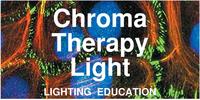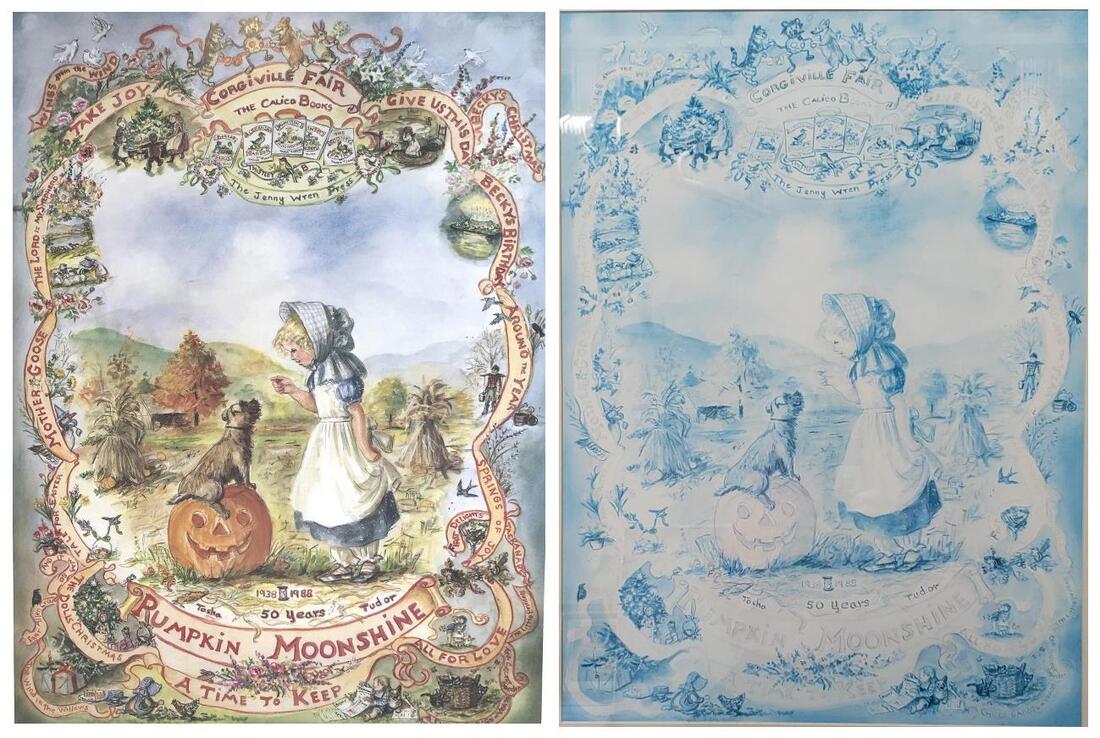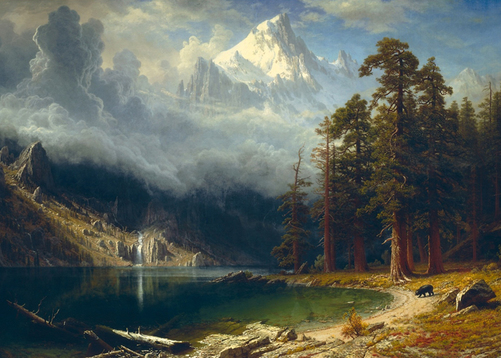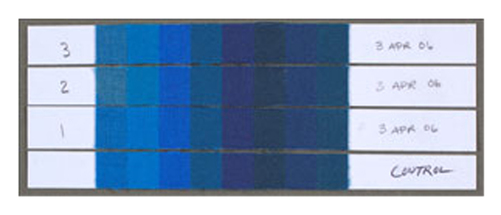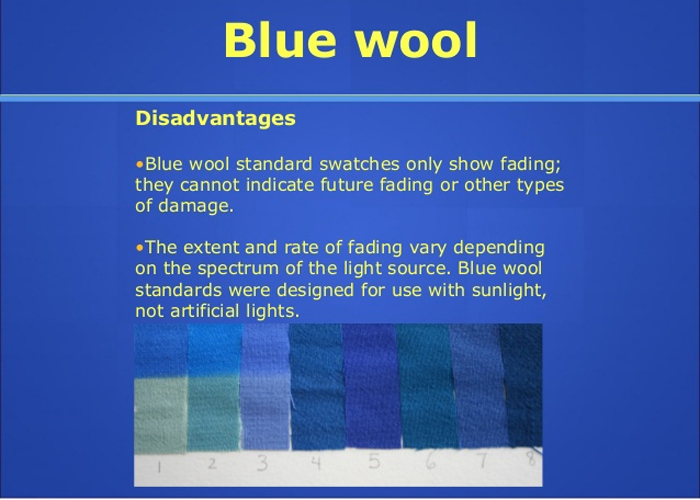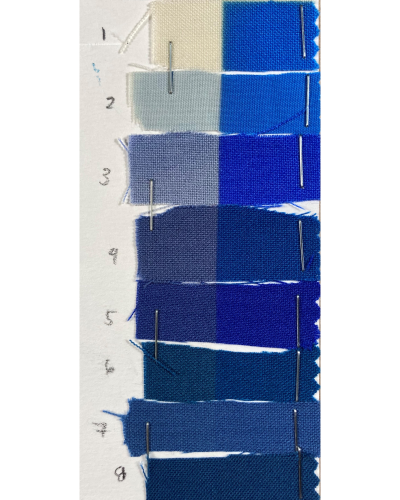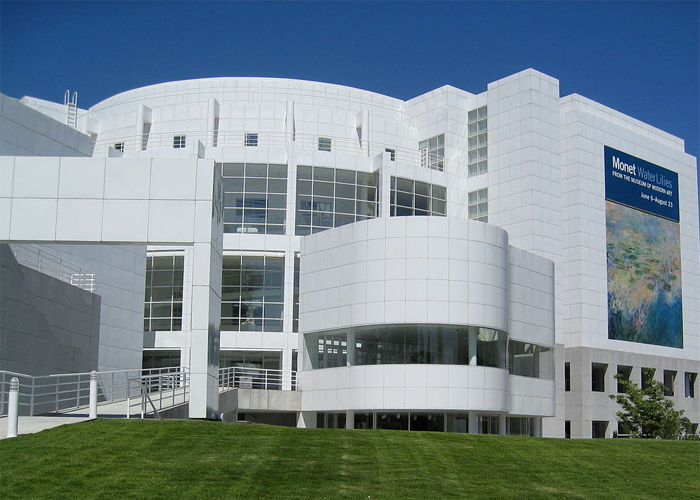Learning Objectives
How is color in paint changed by light? Does paint fade?Regardless whether the artwork is a reproduction or a work of fine art, it can be damaged by light. As you can see by the example of the poster below, the irreversible damage can be extreme.
Why does paint fade?Why does paint fade? "The molecules within the pigments alter with exposure to light, it creates a chemical response, that translates into an effect on the pigment, it can fade, certain aspects of it can become stronger or lighter. The ground (paper, canvas, or what it is printed on) also changes in response to light and temperature and that impacts what we see as color." [1]
Van Gogh’s Fading Colors Inspire Scientific Inquiry"He was a prolific painter—in the 10 years he was active as an artist, van Gogh produced nearly 1,000 paintings. He was also a prolific writer: In letters to family and friends, he discussed in detail the pigments he purchased and the colors of his newly painted canvases. ..As a result, van Gogh’s canvases have led to multiple discoveries about the breakdown of fragile—or what conservators call 'fugitive'—pigments." [2] See the rest of this article in Chemical & Engineering News
Why does light make colors fade?Light will change paint, dye, or pigments in unpredictable ways, fading, reduced intensity and saturation, becoming less brilliant, and often shifting to another part of the color spectrum. It is important to understand that light affects pigments by both intensity, how bright the light is measured in footcandles or lux, and duration, how long it is exposed to the light.
Intensity and Duration Fading is increased as the intensity of the light, amount of Ultra Violet (UV included the wavelengths that cause sunburn), and by duration or the number of hours per day a work of art is exposed to light. With the developments of synthetic dyes, and 'fade resistant' pigments there is now a huge range in the amount of fading that occurs over time. Care needs to be taken in conserving all art, since to measure the fading of colored surfaces requires light exposure to prove fading, and then it is too late, since the damage has already been done and cannot be reversed. Paper, textiles, and other materials are damaged by exposure to light, heat, and moisture. 'Yellowing' of paper over time has been witnessed by most of us. Not only has the original color shifted from white to yellow, the fibers themselves have been weakened. Imagine a flag blowing in the sun and wind day after day, eventually it weakens and shreds. We do not want that to happen to our art. How do we protect works of art from light damage? Why no flash photography allowed?
Museums and collectors around the world struggle with preserving their art by limiting the time for viewing by the public. Many works are 'rotated' from storage to galleries with records kept for duration of light exposure. Exposure to and duration of natural and artificial light are evaluated in combination with the materials used to create the work. The flash from your camera or cell phone not only distract other museum visitors; they can damage the art. This is because they are super-bright, and even though it is only a quick flash, over time, these repeated little moments have a cumulative effect and can add up to big damage including fading, cracking, flaking, and even an effect similar to sunburn, where the image darkens over time.
Albert Bierstadt, Mount Corcoran, c. 1876–77
It is a huge responsibility for museums to conserve and preserve paintings such as this one by Albert Bierstadt, illustrating the exploration of the Western United States painted in in 1876. Glass vs. Acrylic Glass for Hospitality Spaces"Fine art reproductions and works on paper should be framed with standard glass to protect the piece from dust and damage. Use acrylic for art measuring over 30” x 40" to reduce the chance of glass breakage when shipping in bulk...Non-reflective glass has a “matte” quality to it, which minimizes glare but doesn’t protect from UV damage.
Conservation Clear® glass protects art from fading when exposed to light with UV protection and adds an anti-glare coating that makes the glass practically invisible — a great choice for bright spaces. Read more at The Art of Specifying Art, Kevin Barry Fine Art." [3] Optium Museum Acrylic® is a UV protective, museum quality acrylic suitable for art. UV filtering glass for doors, windows, and skylights is an important decision in spaces where art will be displayed. |
Monitoring Color FadingTraditionally blue wool test strips are used to test for light fading materials. A series of blue dyed strips are placed inside a museum exhibit case with a light blocking strip covering part of the strip. On a pre-determined schedule, new portions of the strips are exposed to light. This results in a graduated color faded sample, allowing museum conservators to evaluate both the damage done by light sources and the stability of the dyes or pigments.
Blue dyed wool has been traditionally used to calibrate the fading strength of various light sources. Developed for testing under sunlight, today's museums and artists need new methods for testing fading. According to Liquitex Paint Company, "Two to three times brighter than a halogen, the Xenon chamber is a turbo-charged version of real life. It lets us accelerate the process. When paint swatches are put in the machine for 300 hours and blasted with light, which is equivalent to 100 years of studio conditions. We also use Blue Wool scales standard that we put in with the samples each time we conduct a test. Then, we remove the swatches and observe the change.
The Xenon Arc Machine uses an arc of ultra-bright xenon lights to replicate ‘real’ light conditions. In other words, the machine replicates the process of colors being exposed to natural daylight filtered through a glass window. The bulbs produce white-blue light in full spectrum UV, visible light and infrared rays." [4] How do we rate lightfastness?
In the art world, the two main measurements for lightfastness are the ASTM scale (American Standard Test Measure) and the Blue Wool Scale (BWS). Liquitex mainly uses ASTM, invented by the American Society for Testing & Materials. This shows how a color will stand up when kept inside in museum conditions and rates it from I to V (I = excellent, V = v poor). The BWS uses a rating of 1-8 (1 = extremely poor lightfastness, 8 = maximum lightfastness possible). ASTM I = Excellent (should show no signs of change over 100 years) II = Very good (should remain unchanged for 50–100 years) III = Fair (should remain unchanged for 15–50 years) IV = Poor (should remain unchanged for 2–15 years) V = Fugitive or very poor (will show changes in 2 years or less) BWS 7-8 = Excellent (equivalent to ASTM I) 6 = Very Good (ASTM II) 4-5 = Fair (ASTM III) 2-3 = Poor / Impermanent (ASTM IV) 1 = Very poor (fugitive) (ASTM V) Museum Lighting Research - The Getty Conservation Institute
Institutions throughout the world struggle to keep ahead of advancing lighting technologies and to do no harm to their collections. The Los Angeles Getty Center's Conservation Institute has been leading this research for the last 30 years. "To what extent can the range of techniques for illuminating works of art on paper be improved or modified to provide a higher margin of safety to light-sensitive artifacts and improve the aesthetic viewing experience when applying exhibition illumination guidelines? The GCI's Museum Lighting Research project aims to explore this question through a range of research..." [5]
Are LED's safer for illuminating art?Halogen, Incandescent, Fluorescent, and HID light sources all include high levels of UV light that can damage art. LED light sources may have lower levels of UV; however, the factors of intensity and duration still have effects. Ask your LED lamp provider to send UV emission data for any new light sources.
See Lighting Design Topics for more design metrics such as color rendering, a problem with many LEDs. Footnotes
Photo Credits
|
- Home
-
- CHROMA Topics
- Color Spectrum - Light is Energy
- Color in Light
- Color in Nature
- Color in Paint
- Why does paint fade?
- Color Names & Meanings
- Color Phenomena
- Color Perception is Individual
- Color In Fashion
- Color for your home
- Color in Space
- Color Blindness
- Color Blind Interview
- Synesthesia
- Synesthete Deborah Borrowdale-Cox
- Synesthete Stephen Orr, BH&G Editor
-
- Circadian & THERAPY Topics
- Circadian Explained
- Circadian Ganglion Cells
- Circadian Melatonin
- Circadian Animals
- Circadian Research
- Autism & Lighting for the Spectrum
- Blue Light Dimming Apps
- Red Night Lights
- Vitamin D & Light
- SAD - Seasonal Affective Disorder
- Alzheimers and Light Therapy
- Photosensitivity - Light Sensitive Drugs
- Red Light Therapy
- Sleep & Lighting
- Dreams and Second Sleep
- NASA - Lighting in Space & Undersea
- Jet Lag
- Sunglasses
- Chakras
- Crystals, Minerals, & Gemstones
-
- LIGHTing Design Topics
- UV Germicidal Disinfection Light
- LED Lighting Facts Card
- CRI - Color Rendering Index
- LED TM-30
- LED Kelvin Color
- LED LPW
- LED Flicker
- LED Glare
- OLED - Organic LED
- Human Centric Lighting
- Lighting with Daylighting
- Lighting for Healthy Buildings & Zero Net Energy
- Lighting for Healthcare
- Lighting for Horticulture
- Lighting for Hospitality & LED Retrofits
- Lighting for Museums
- Lighting for Seniors & Low Vision
- Lighting Design Tips & Codes
- Parking Lot Lighting
- Solar Lighting for Humanity & World Health
- Davis Insectary Garden
- Santa Barbara Mesa Insectary Garden
- Home
-
- CHROMA Topics
- Color Spectrum - Light is Energy
- Color in Light
- Color in Nature
- Color in Paint
- Why does paint fade?
- Color Names & Meanings
- Color Phenomena
- Color Perception is Individual
- Color In Fashion
- Color for your home
- Color in Space
- Color Blindness
- Color Blind Interview
- Synesthesia
- Synesthete Deborah Borrowdale-Cox
- Synesthete Stephen Orr, BH&G Editor
-
- Circadian & THERAPY Topics
- Circadian Explained
- Circadian Ganglion Cells
- Circadian Melatonin
- Circadian Animals
- Circadian Research
- Autism & Lighting for the Spectrum
- Blue Light Dimming Apps
- Red Night Lights
- Vitamin D & Light
- SAD - Seasonal Affective Disorder
- Alzheimers and Light Therapy
- Photosensitivity - Light Sensitive Drugs
- Red Light Therapy
- Sleep & Lighting
- Dreams and Second Sleep
- NASA - Lighting in Space & Undersea
- Jet Lag
- Sunglasses
- Chakras
- Crystals, Minerals, & Gemstones
-
- LIGHTing Design Topics
- UV Germicidal Disinfection Light
- LED Lighting Facts Card
- CRI - Color Rendering Index
- LED TM-30
- LED Kelvin Color
- LED LPW
- LED Flicker
- LED Glare
- OLED - Organic LED
- Human Centric Lighting
- Lighting with Daylighting
- Lighting for Healthy Buildings & Zero Net Energy
- Lighting for Healthcare
- Lighting for Horticulture
- Lighting for Hospitality & LED Retrofits
- Lighting for Museums
- Lighting for Seniors & Low Vision
- Lighting Design Tips & Codes
- Parking Lot Lighting
- Solar Lighting for Humanity & World Health
- Davis Insectary Garden
- Santa Barbara Mesa Insectary Garden
